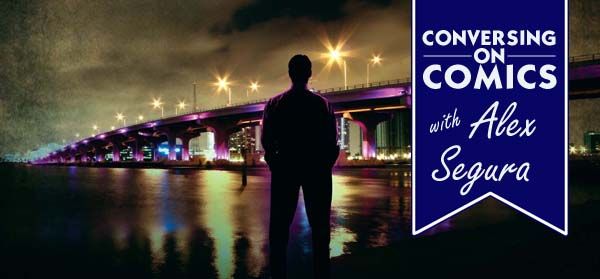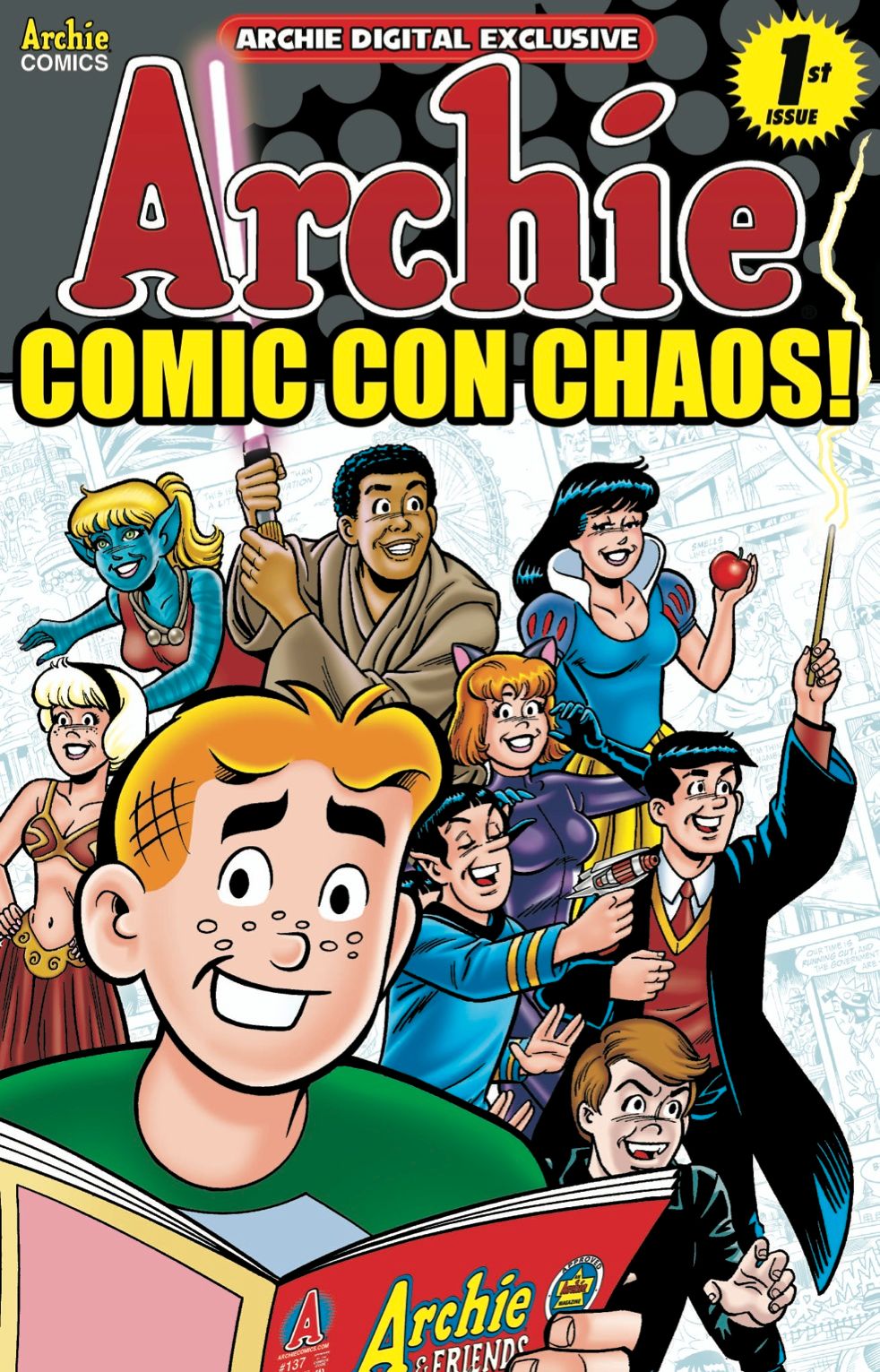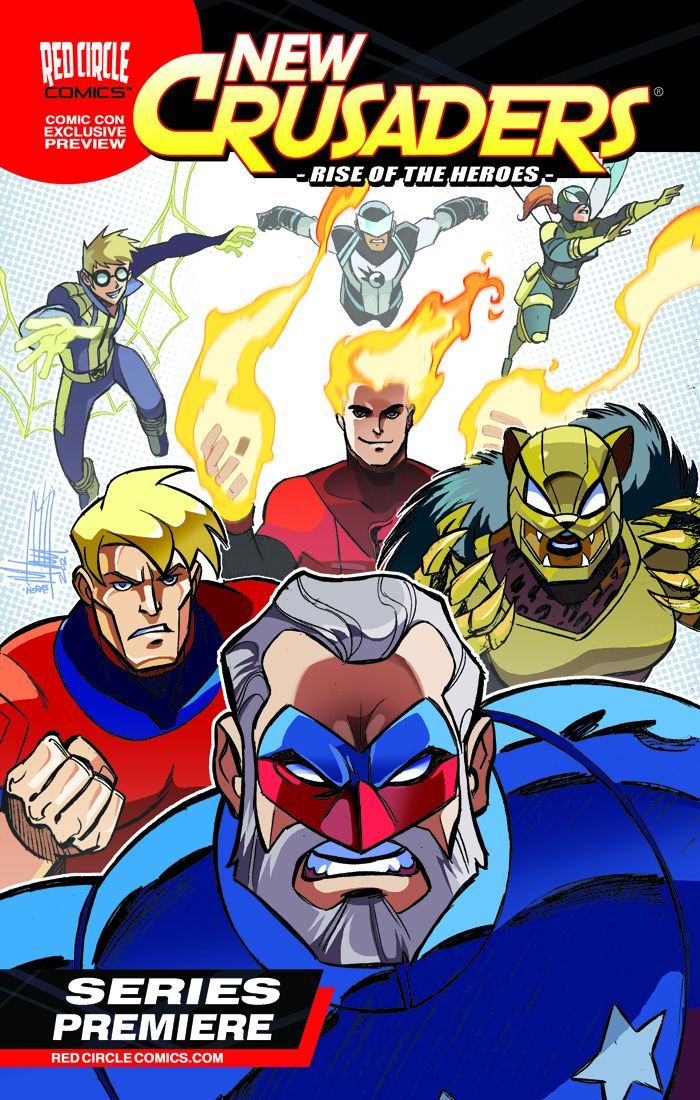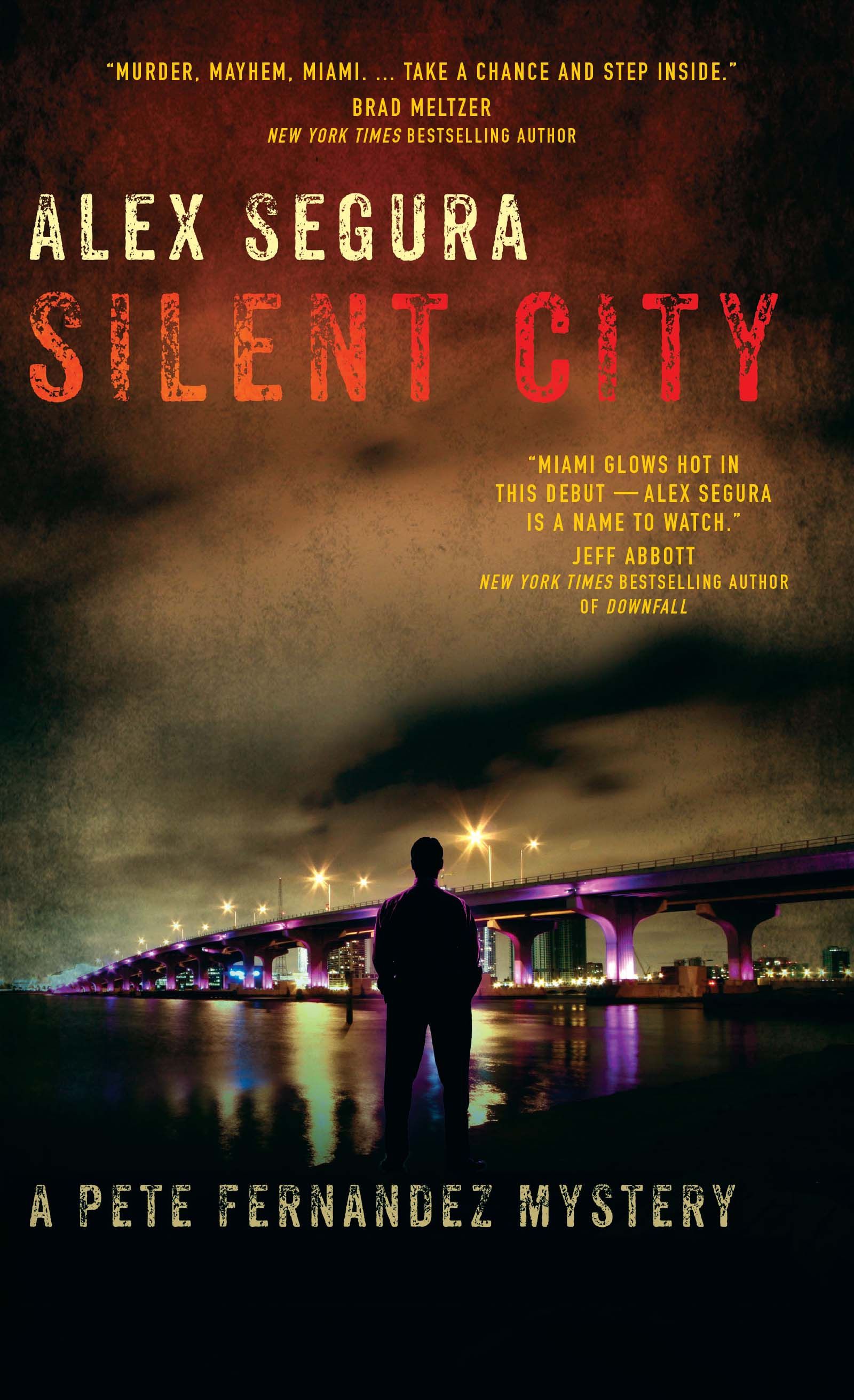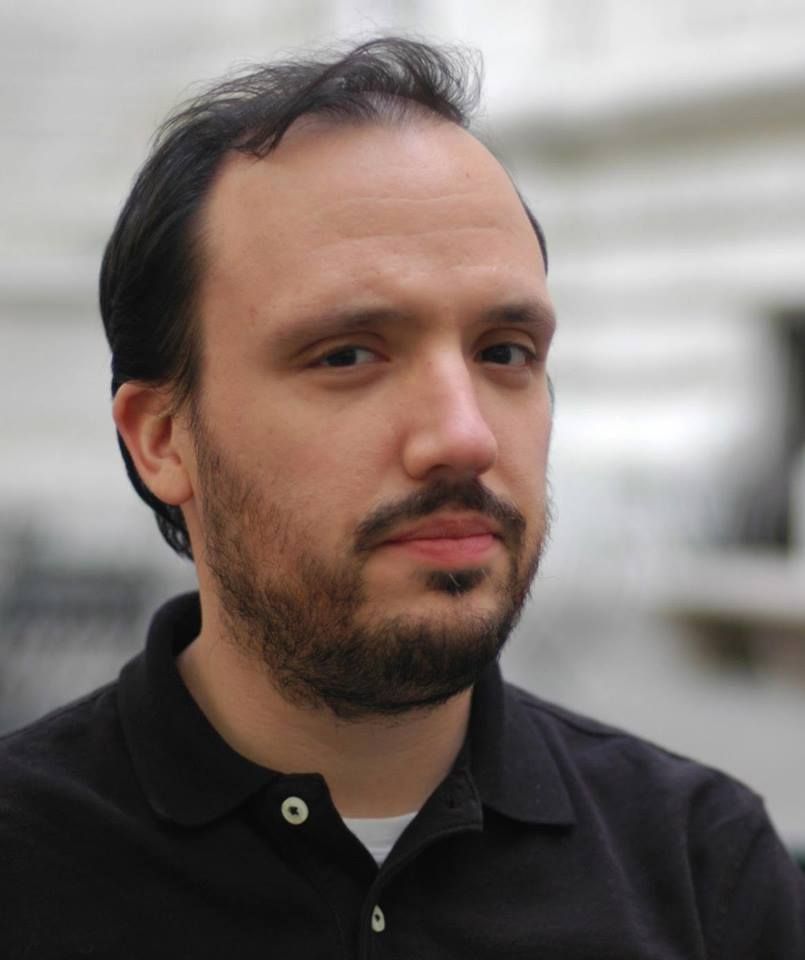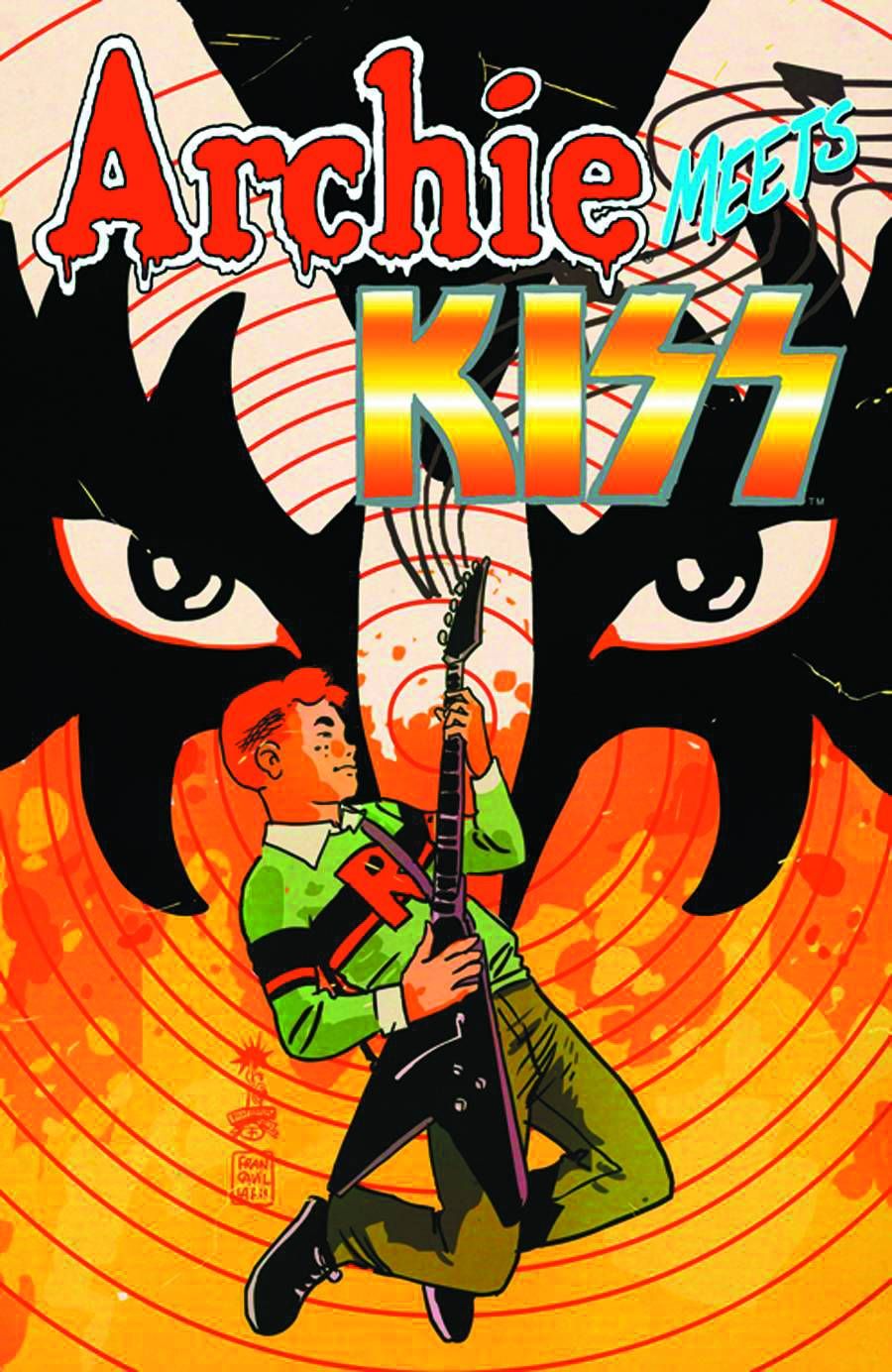The past several months have been period of transition for Alex Segura. In February, he left his position as executive director of publicity at DC Entertainment to return to Archie Comics, where he became senior vice president of publicity and marketing, and editor of its Red Circle line. But even before that, he entered a new phase of his career with the October release of his first prose novel, a mystery called Silent City set in his native Miami.
As Segura enters this new chapter in his life, ROBOT 6 reached out to talk about his new duties at Archie and his new career as a novelist.
Chis Arrant: Just to get a feel for things, where are you at while doing this interview, and what work are you up to?
Alex Segura: I’m at my desk in Riverdale HQ, reading a pitch for a Red Circle character I’m very excited about.
Earlier this month Archie Comics announced you were re-joining the company as both senior vice president of publicity and marketing, as well as editor of the Red Circle superhero imprint. What led you to reconnecting with Archie after working at DC Entertainment?
Without getting too much into the personal details, sure: I couldn’t make the move to Burbank with DC, which was really unfortunate, because I enjoyed working there and have the utmost respect for the people there. It’s a great place, and I wish everyone there the best. Everyone’s decision in regards to the move is an extremely personal one, so I can only speak to mine, and even that is something very private.
Luckily, I had a good relationship with the Archie crew – including Jon Goldwater and Mike Pellerito -- and once I knew I wasn’t going to move out West, the idea of me coming back to Archie was in play. It happened fairly quickly, and here I am. It’s very rare you can come back and become part of something you really liked, and the energy at Archie is supremely positive and vibrant. There’s a lot of good stuff going on, and Archie is always trying new things and bucking the system and preconceptions, which is fun. We’re definitely a publisher to watch. The moves we’ve announced over the last few weeks – bringing in Roberto Aguirre-Sacasa as CCO and the Lena Dunham news – are just the tip of the iceberg.
This new job brings you back into the creative side of comics, editing the Red Circle line, which you helped brainstorm during your previous tenure at Archie. Is this something you’ve been thinking about – working on the comics production side of things – for a while?
I had a lot of fun being part of the “Red Circle brain trust” with Mike Pellerito and Paul Kaminski during my first tenure at Archie and have a great fondness for New Crusaders and the stuff that book aimed to do. So, when the possibility of doing more hands-on editing of the upcoming slate of Red Circle titles arose, that made the overall package even more appealing. I wouldn’t say it was something I was thinking about prior to coming back, but I have always kept my hands in the creative side – even at DC I was working on my first novel and the subsequent ones. I like having the ability to not only react to creative decisions via publicity, but to also have input in making them and reaching out to some of my creator friends to help revitalize these characters for the current marketplace.
Our CEO Jon Goldwater has mentioned Red Circle a bit in recent interviews, so I’ll reiterate what he said: We want these characters to stand out and be compelling, not feel like one of many heroes or a carbon copy of existing Marvel and DC stuff. You can go there for that stuff. They do those kind of books best, and I don’t mean that as a slight. It’s just not what we’re interested in doing. These books will be creator-driven, unique and more akin to cable television in terms of content, tone and structure.
It’s been a blast working with Jon, Paul, Ski and Mike again, too, and with Roberto for the first time. They’ve got some great ideas and we’re all psyched to get these characters out there.
How would you describe the theme or feel Archie is going for with the Red Circle heroes, especially now as you oversee them?
I can only speak generally, because we’re very much in the early stages. I’m working closely with Jon Goldwater, Mike Pellerito, our new CCO Roberto Aguirre-Sacasa and Paul Kaminski to nail down not just which characters we want to focus on, but which creators are best suited to tell their stories. We don’t want Black Hood to feel like Batman outtakes, for example, or make The Shield and Cap interchangeable. Each title or character will have his own unique tone and story – but we will be trying to push the envelope. These won’t be all-ages superhero books that we hope will appeal to older readers. As much as I love New Crusaders, it won’t be a direct follow-up to that. If you want an idea of what we’re shooting for, Afterlife with Archie is your best example. We see the Red Circle expansion as a continuation of the success of Afterlife.
At the same time this is going on, you’re also riding high on the release of your first prose novel, Silent City. You’ve written comics before, but when did your prose writing side of you kick into high gear – and what caused it?
Silent City’s had a long runway. The first draft is dated 2008. I first got into crime fiction when I moved to New York, around 2006. I devoured a lot of the classics, like Raymond Chandler, and really enjoyed the material. I didn’t really feel personally connected to the genre, though, until my friend Will Dennis handed me a copy of George Pelecanos’ first novel, A Firing Offense. Here was a book that was chock-full of a kinetic, almost post-punk energy in the way it was written – with a narrator who was terribly flawed, young and confused. I could relate to Nick Stefanos and, more importantly, felt like I could write this kind of book, too. It’s probably what new wave bands felt like when they first heard punk acts like the Ramones, just on a much less exciting scale. [laughs]
So, with that energy, I dove into the book. It went through a lot of drafts and revisions. Writing your first novel is very much an exercise in trial and error. I didn’t have a handbook of what to do, so there was a lot of “Oh, OK, that’s wrong. Time to start over.” But there were also a lot of great moments, like waking up in the middle of the night to jot something down because a key plot twist just popped into your mind.
Silent City’s Pete Fernandez really sounds like a part of you -- ex-newspaper man whose hometown is Miami, and someone with a deep admiration for his father – I remember when you had “Jr.” at the end of your name! Can you tell us about creating Pete, and finding that story that’d make him a great lead for this crime caper?
The “Jr.” still exists – it’s just not on the cover of my novels and writing credits! Yeah, I think there’s a bit of Pete in me, but also a lot of Pete that has nothing to do with me. I wanted to write about a character who was flawed, not necessarily sure of what he wanted to do with his life and also capable of making mistakes and paying the price for them. I think that describes a lot of people in their late twenties/early thirties. I also wanted to use Miami as a setting for a crime novel, which I felt was a really untapped resource, despite the existence of some great Miami crime novels, like Miami Purity by Vicki Hendricks.
I wish I could say Pete just popped into my head fully formed, but his birth was pretty gradual. Before I got the spark to write Silent City, I’d taken stabs at short stories, poems and a few novels that will never escape my desk drawer – not crime novels, per se, more literary fiction in the vein of Michael Chabon. But those drafts meandered and I didn’t have the discipline at the time to finish them off. That being said, the main character was very much a proto-Pete Fernandez, so when I decided I want to write a crime novel, Pete showed up and asked for the role.
As for why he’s a great lead, I think he fits well because I really wanted a protagonist who wasn’t fully formed – he wasn’t sitting in his office waiting for the femme fatale to come in and ask him to find someone. Those stories already exist and are better than I could tell them. I wanted a character who was learning as he stumbled, and who may not survive the experience. I think it’s nice to keep the readers unsure about whether the hero’s going to make it through or not.
There’s a definite arc to Pete’s story – the second book, Down the Darkest Street, is a much, well, darker book. It explores the difficulty one faces when trying to improve yourself and the gray areas of life – relationships, your past and desires. Basically, it’s not easy – and it’s sometimes a series of peaks and valleys. By the end of Silent City, not to give too much away, the reader is left with a smidgen of hope that Pete will be OK. That’s demolished in the first page of Down the Darkest Street, and it gets worse from there.
When do you expect Down the Darkest Street to come out?
No set release date for the second Pete book. Hopefully sometime next year. More details as I have them!
Miami’s your hometown, and you write of it lovingly in Silent City and visit it often. If your work didn’t tie you down to New York City, do you think you’d consider going back to Florida?
As we touched on a bit earlier, there are a lot of factors that play into a move, so I wouldn’t want to speculate. My wife and I visit Miami a few times a year, so while it’s not my current home, it’s certainly “where I’m from.” I still feel a great connection to it. So – never say never?
That being said, how do you view Florida after having lived in New York for so long -- both as your roots and as a setting for your crime novels thus far?
That’s a good question. I mentioned this a while back – I had a book event at Books & Books, a wonderful bookstore in Miami - and someone asked me why I picked Miami as the setting for the Pete books. My answer was pretty basic, just that it was all I knew at that point, or knew well enough to write about in detail. That being said, I first started writing Silent City over five years ago, so the city has changed a lot, and visiting once or twice a year is very different from living there. I’ve also gotten to know New York better. So, maybe in the near future I’ll take a stab at writing a book set outside of Miami.
But on the flip side, I could see myself writing about Miami forever – it’s such a fertile setting, especially for crime. Behind the perception or people’s idea of Miami – the palm trees, umbrella drinks, sun, beaches – there’s a place with dark corners, clashing cultures, diverse and ingenious criminals and enough crazy to populate the entire country. And, like I said earlier, I felt like there was a dearth of Miami crime books when I started writing Silent City. Anything I can do to add to that library, even if it’s just a few books, is important to me.
As I mentioned earlier, you’ve done several comics – a short for DC as well as several Archie stories, including the excellent Archie Meets KISS. Comics writing seemed to take a back seat to your day job and your prose novel, but in this new chapter of your life could we see you doing more – maybe doing a crime comic?
I definitely see more comic writing in the future, though nothing I can announce right away. My current focus is getting Down the Darkest Street ready and writing a short story with my pal Justin Aclin for an upcoming sci-fi anthology titled Apollo’s Daughters, which has been a lot of fun to think about and a long time coming.
A crime comic is an interesting idea, though at first blush it strikes me as too easy a connection to make. I loved being able to write off-the-wall stuff like Archie Meets KISS or Occupy Riverdale. These were books that came about as conversational topics and then became comics, allowing me to collaborate with great artists like Gisele, Dan Parent, Francesco Francavilla and Jill Thompson. I’d love to write a music comic, for example.
Since I have you here I can’t help but dig up some past – specifically that you are in may ways the originator of ROBOT 6. It rose out of the ashes of Blog@Newsarama, which itself came from your own comics blog The Great Curve prior to your marketing career when you were a journalist for places like Newsarama and Wizard. What’s it like seeing The Great Curve come so far?
It’s awesome! I’m really thrilled the blog lives on to this day. I remember sending out the press release to some comic sites when I launched The Great Curve, and being so excited when Scott McCloud emailed me to ask if the blog was, in fact, named after the Talking Heads song. So many great writers have contributed to the blog’s lineage – from The Great Curve to Blog@ to ROBOT 6 – it’s amazing.

